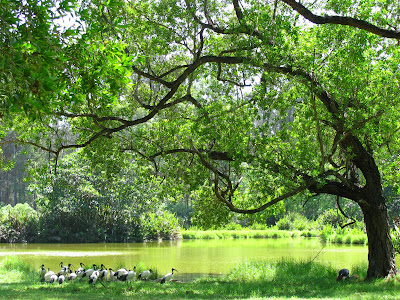Haller Park, Mombasa
For me, a trip to Mombasa Haller Park Haller Park

 |
| You can see the excavation site (derelict quarry) behind... |
Dr. Haller experimented with tree planting and found that in the severely
barren conditions only casuarina equisetifolia survived and thus willy nilly the initial mitigation measure began as a monoculture plantation. As the next step, millipedes were introduced to feed on casuarina needles that fell on to the quarry floor and to turn them into humus.
At a conference organized on the occasion of Nature
 |
| Nile crocodiles in Reptile Park |
 |
| Lily pond |
 |
| Eland, the largest antelope... looks rather like cattle |
In my ecology studies I had learnt of development of ecological seres, how flora and fauna evolve naturally on barren land, volcanic islands or in ponds, the succession of species – of plants, the elbowing and edging out of certain weaker species by the dominant ones, the competition and struggle, the establishment of the predominant ones, and finally the climax vegetation, the survival of the fittest. It is one thing to observe and extrapolate natural progression, entirely another for man to replicate the same in a manner of reverse engineering. Such instances of ecological rehabilitation of spent spaces, few and far between as they are, are a testimony to man’s ingenuity and give hope that if man decides, he can restore lost ecosystems.


I had been to Haller Park
 |
| Who would believe this was once a dust and debris aridity? |



















